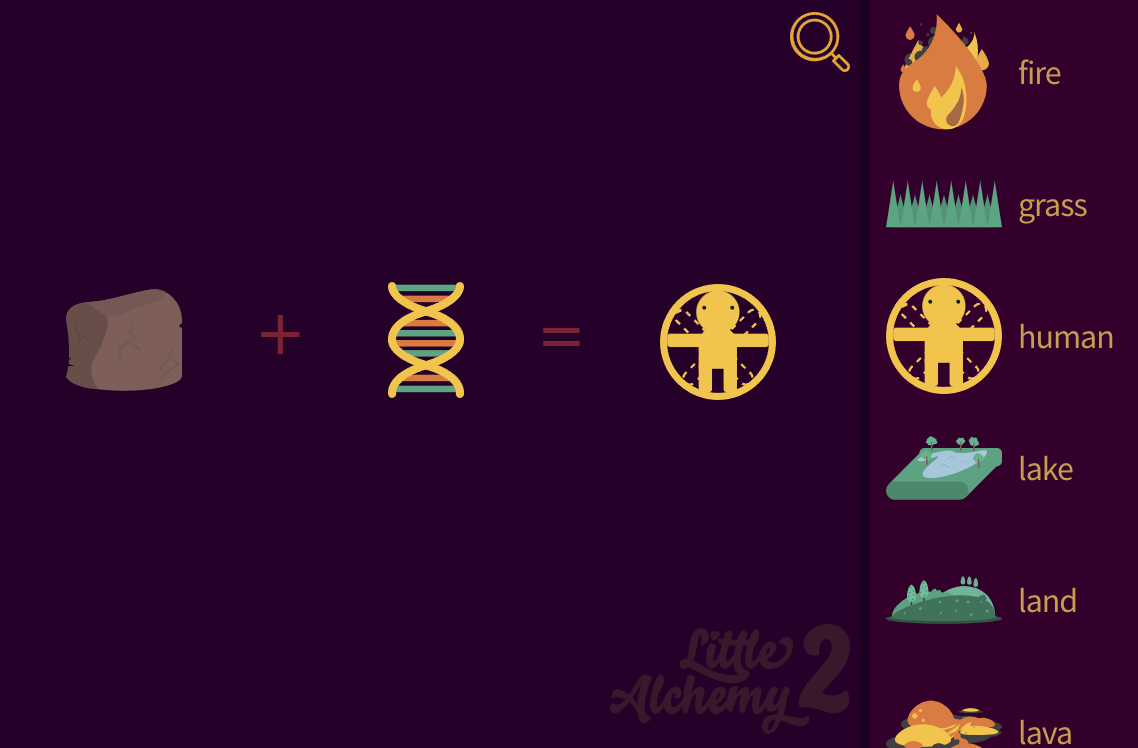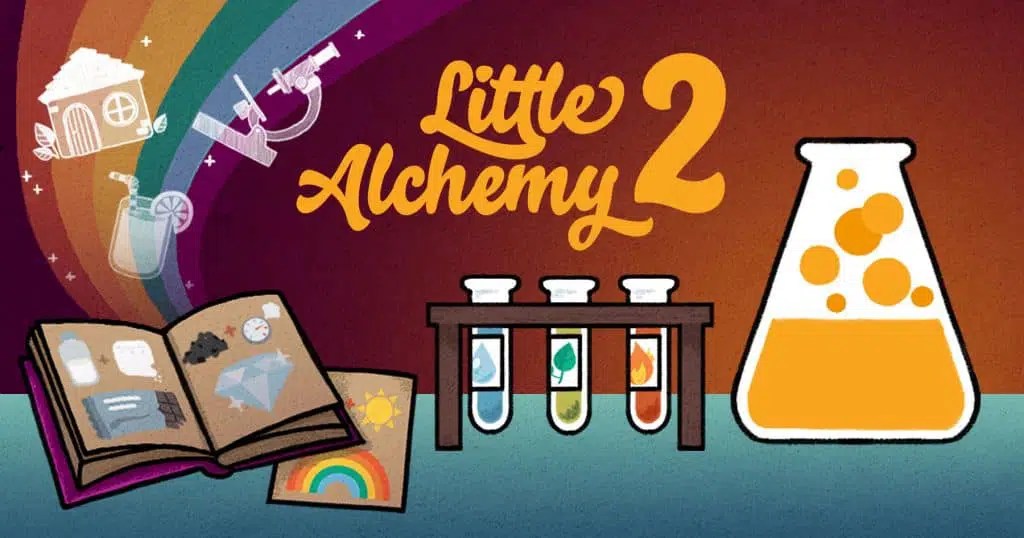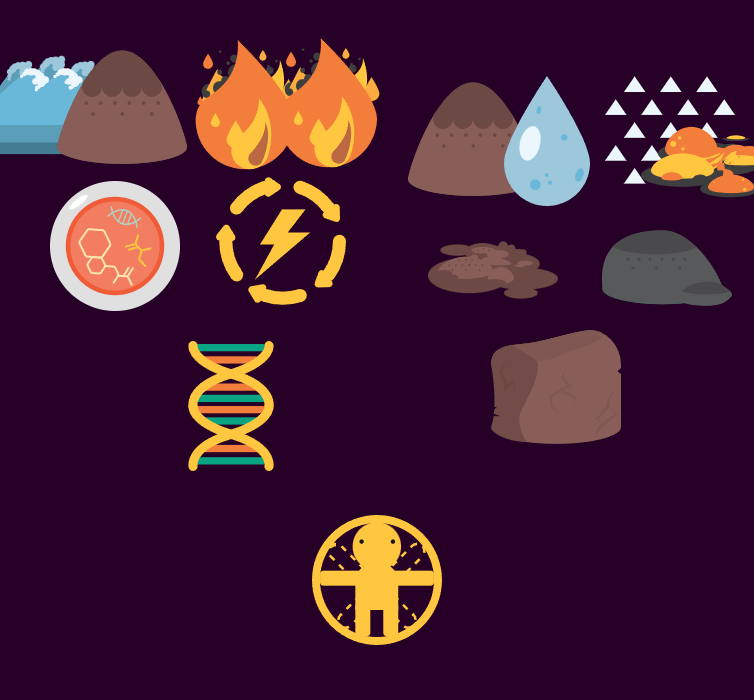Unlocking the human form within the game's alchemical framework presents a challenge and a rewarding accomplishment.
Crafting a representation of humanity within the game necessitates a strategic approach to combining elements. The process involves a series of transformations, beginning with fundamental materials like earth, fire, air, and water. These basic elements must be progressively combined, building complexity through subsequent transformations into more intricate substances. The exact steps are not universally known or easily documented, as the game's unpredictable nature sometimes requires experimentation and multiple attempts. This exploration process is integral to the game's charm, fostering problem-solving skills and encouraging players to discover unique solution pathways. Specific combinations of elements and sequences required for this goal are not readily and publicly available, adding to the appeal of discovery and the challenge of play.
Mastering the recipe for the "human" form in the game offers a sense of accomplishment and encourages exploration. This achievement signifies a player's understanding of the game's mechanics, highlighting the importance of experimentation and the joy of discovering unique solutions. By progressing through the synthesis of simpler elements, the creation of a human form mirrors the complex processes of life, reflecting the wonder and intricacy of the game itself.
The process of crafting the human form within the game is a fascinating aspect of the interactive experience. Subsequent sections will delve into the specific combinations and techniques required to achieve this particular goal.
Crafting Humanity in Little Alchemy 2
Unlocking the "human" creation in Little Alchemy 2 necessitates a systematic approach, emphasizing the precise combination of elements. This process unveils the game's intricate synthesis mechanics.
- Element Combination
- Transformation Sequence
- Experimentation
- Trial and Error
- Progression
- Strategic Approach
The "human" creation hinges on methodical element combinations. Transformation sequences, often unpredictable, require experimentation and trial and error. Players must progressively build complexity through each stage. Successful crafting reflects a strategic approach, encompassing the entire progression from basic elements to the "human" form. For example, combining "earth," "water," and "air" might lead to a "plant," then "animal," and ultimately "human" through a nuanced understanding of the game's mechanics. Successful creation demonstrates mastery over the game's intricate and rewarding synthesis system.
1. Element Combination
Central to the process of crafting "human" in Little Alchemy 2 is the meticulous combination of elements. This aspect underscores the game's core mechanic, demanding players understand the relationships between fundamental materials and the resulting transformations.
- Fundamental Elements and Their Interplay
The game begins with a set of fundamental elements earth, air, fire, and water. Understanding the initial interplay between these four is crucial. Simple combinations, like combining water and earth, create new substances. These initial combinations are the foundational steps toward more complex creations. The game's approach mirrors real-world scientific principles, where fundamental substances combine to form more complex compounds. It is through these basic transformations that players progressively learn the game's system.
- Progressive Complexity
The process isn't linear. As players combine elements, they encounter more sophisticated substances. This progression is essential; one cannot proceed to more advanced creations without having mastered the intermediary combinations. Each subsequent step builds upon prior knowledge and understanding. A grasp of these intermediate creations is key to crafting more elaborate forms.
- Unexpected Interactions
The game's logic extends beyond simple addition; elements interact in surprising ways. Combining seemingly unrelated elements can yield unexpected results, often producing entirely new substances. Players must observe these unpredictable interactions to unlock creative pathways. Understanding these unusual combinations is a major element of the game's design.
- Synergy and Chains of Transformation
The synthesis process often involves chains of transformations, where one combination leads to another. Recognizing these connections and employing logical sequencing to proceed from initial elements to the "human" form is crucial. Players must navigate these interconnected transformations, appreciating the logical steps involved.
Element combination, therefore, is not merely a collection of procedures but a comprehensive understanding of how elements interact and transform. Mastering this aspect provides the foundation for successfully crafting "human" in Little Alchemy 2, showcasing the game's intricate interplay of materials and the dynamic transformations they undergo.
2. Transformation Sequence
The successful creation of a "human" in Little Alchemy 2 hinges critically on understanding and executing a precise transformation sequence. This sequence isn't arbitrary; it reflects the game's internal logic and the interrelationships between elements. The order of combinations matters; a different order often yields different, and frequently non-desirable, results.
The concept of transformation sequences in Little Alchemy 2 mirrors real-world chemical processes. Just as elements react in specific ways to form new compounds, the game's alchemy follows a set of rules governing the transformations. To achieve the "human" form, players must understand and follow a logical sequence of transformations. For instance, combining 'water' and 'earth' produces 'mud', which, in turn, through the appropriate sequence of reactions, can lead to more complex organic structures like 'plant' and eventually 'animal' which can further be transformed into 'human'. Failing to follow this logical chain often results in the creation of less desirable or irrelevant items.
Consequently, understanding transformation sequences is paramount to comprehending the core mechanics of Little Alchemy 2. It highlights the importance of not only the elements used, but also the precise order and the relationships between those elements in the game's internal logic. This methodical approach to synthesis underscores the game's deeper pedagogical value: players must understand the structure and interactions of the world within the game, in much the same way a scientist must understand the connections between elements in the real world. This understanding, while seemingly simple in the context of a game, serves as a foundation for comprehending the dynamic interplay of interconnected systems.
3. Experimentation
Crafting a "human" in Little Alchemy 2 necessitates a willingness to experiment. The game's non-linear nature demands a proactive approach; a fixed set of instructions for this particular outcome doesn't exist. Success hinges on exploring different element combinations and sequences. This process parallels scientific discovery, where experimentation and iterative refinement lead to breakthroughs. Just as scientists test hypotheses through controlled experiments, players in Little Alchemy 2 must try various combinations, recognizing that multiple attempts may be needed for the desired result.
The game's unpredictability underscores the importance of experimentation. Unexpected interactions between elements can lead to novel transformations. Observing and understanding these unexpected outcomes is crucial for successful crafting. For example, combining "air" and "fire" might not immediately yield the intended result; but through trial and error, a player might discover a sequence that leads to the desired transformation. This underscores the iterative nature of learning and problem-solving within the game environment, which effectively mirrors the practical application of scientific method in real-world contexts.
Experimentation in Little Alchemy 2 fosters analytical thinking and logical deduction. Recognizing patterns in successful transformations and understanding how elements interact allows players to predict and manipulate future combinations. This, in turn, allows for a deeper engagement with the game's underlying logic. The process of crafting a "human" through repeated experimentation and thoughtful observation, much like the process of scientific discovery, ultimately contributes to a more profound understanding and appreciation of the game's intricate mechanisms. Ultimately, embracing experimentation as a key component to the process fosters a more enriching and engaging experience within Little Alchemy 2.
4. Trial and Error
The process of crafting a "human" in Little Alchemy 2 is deeply intertwined with the principle of trial and error. Success in this game hinges on a systematic approach to experimentation, as a predetermined recipe is not readily available. The iterative process of combining elements, observing outcomes, and refining strategies is fundamental to achieving the desired result.
- Iterative Approach to Synthesis
The game's mechanics necessitate a cyclical process of combination and observation. Players must repeatedly try different combinations of elements, carefully noting the results. This iterative approach, central to the game's design, mirrors the experimental nature of scientific discovery and technological advancement. The creation of a "human" demands a commitment to testing numerous combinations and discerning patterns in the transformations.
- Learning from Unsuccessful Attempts
Unsuccessful attempts in Little Alchemy 2 are not failures, but valuable learning experiences. Each failed combination provides insights into the game's logic and the interactions between elements. Observing what does not produce the desired result is equally important as noting successful outcomes. This aspect highlights the importance of meticulous record-keeping and analysis in evaluating the game's mechanisms.
- Importance of Observation and Pattern Recognition
The success of trial and error relies heavily on diligent observation. Players must carefully note the outcomes of each combination to identify patterns and relationships between elements. Recognizing these patterns is crucial for understanding the game's underlying logic and predicting the potential outcomes of future combinations. This highlights the importance of analysis and the search for underlying order within the apparently random combinations of elements.
- Adaptation and Refinement of Strategy
The process of trial and error encourages adaptability. As players gain experience and observe the game's reactions, their approach to combining elements should evolve. This adaptability and refinement of strategy, in turn, lead to a more efficient and effective method of crafting the "human" form. This aspect underscores the significance of learning from past experiments and adjusting strategies based on accumulated knowledge.
In conclusion, the principle of trial and error is not simply a feature of Little Alchemy 2; it's the very core of its gameplay. By embracing the iterative process of experimentation, meticulous observation, and strategic adaptation, players gain insights into the complex interactions between elements and unlock the secrets of crafting the "human" form. This, ultimately, highlights the profound connection between experimentation, observation, and the acquisition of knowledge within the game's context.
5. Progression
The concept of progression is integral to crafting a "human" in Little Alchemy 2. Success isn't achieved in a single step; it's a journey through a series of transformations, each building upon the previous. This systematic advancement mirrors the gradual complexities of real-world processes and the interconnectedness of elements within the game's alchemical framework.
- Sequential Transformation
Crafting a "human" in Little Alchemy 2 necessitates a specific sequence of transformations. Combining "earth," "water," and "air" yields "mud," followed potentially by "plant," "animal," and ultimately "human." This sequential progression emphasizes the interconnectedness of elements and the systematic development of increasingly complex entities. This pattern corresponds to the principles underlying organic evolution in nature, where simpler forms give rise to more complex ones through a process of gradual change.
- Building Complexity
The games design underscores the principle of increasing complexity. Fundamental elements, combined in specific ways, create intermediate forms. These intermediate forms, in turn, become essential ingredients for subsequent creations. This progressive increase in complexity mirrors the hierarchical structure of the real world, where molecules combine to form cells, which combine to form tissues, and so on. Each step in the sequence involves a higher degree of intricacy and interdependence.
- Strategic Application of Knowledge
Successfully progressing toward the creation of a "human" necessitates a deliberate and strategic approach. Players must analyze past combinations, identifying patterns and understanding the specific interactions of elements. Recognizing these patterns allows for prediction of subsequent transformations, streamlining the crafting process. This highlights a crucial aspect of learningthat knowledge built upon past experiences contributes to greater efficiency and effectiveness.
- Mastery of Intermediate Steps
The creation of "human" is not an isolated event but a culmination of numerous intermediate transformations. Players need to fully comprehend the steps involved in producing "animal" before progressing to "human," for instance. This hierarchical structure of the game's transformations emphasizes the significance of mastering intermediary steps. Understanding the specific chemical processes or biological pathways for these intermediary steps is essential for navigating the challenges of the game's progressive system effectively.
In essence, crafting a "human" in Little Alchemy 2 is not a singular achievement but a testament to successful progression. The player's methodical approach, understanding of transformations, strategic application of knowledge, and mastery of each intermediate step highlight the game's inherent emphasis on learning, problem-solving, and a sequential understanding of the world's complexities. This progressive design ultimately makes the game an engaging experience, reinforcing the player's understanding of the interconnected nature of elements and complex structures.
6. Strategic Approach
A strategic approach is paramount to success in crafting a "human" within Little Alchemy 2. It transcends random experimentation, emphasizing a methodical and calculated approach to element combination and transformation. This structured methodology is crucial for navigating the game's intricate synthesis system, ultimately leading to the desired outcome.
- Planning and Foresight
A strategic approach necessitates pre-planning. Players should consider potential pathways for transformation, anticipating subsequent combinations needed to reach the "human" form. Analogous to a chemist planning a series of reactions, foresight allows for optimization of resources and efficiency of the overall synthesis process. Failing to plan often results in wasted attempts, consuming more time and elements.
- Resource Management
Strategic gameplay involves resource management. Players must judiciously utilize available elements, understanding the scarcity of some, and the potential necessity for repeated attempts at achieving certain intermediate forms. An awareness of element availability helps prevent depleting essential materials before reaching the "human" stage. This calculated usage, similar to managing inventory in a complex project, ensures optimal resource allocation.
- Recognizing Patterns and Sequences
A strategic player identifies patterns in successful combinations. This pattern recognition helps establish logical sequences for the transformations and predict subsequent steps. Recognizing the game's rules for element interaction simplifies the process, much like an expert mechanic recognizing trends in faulty equipment. By acknowledging these patterns, the player reduces the guesswork associated with combinations, improving their chances of success.
- Adaptability and Flexibility
A truly strategic approach acknowledges the unpredictable nature of the game's transformations. Flexibility in approach is crucial. While establishing a foundation of planning, players must adapt to unexpected outcomes and modify their strategies accordingly. This agility mirrors real-world problem-solving, allowing for effective adjustments in the face of unanticipated obstacles and deviations in the planned transformation.
A strategic approach in Little Alchemy 2 effectively translates into efficiency and effectiveness. By incorporating planning, resource management, and adaptability, players can significantly increase the likelihood of crafting a "human." This organized approach not only enhances the chances of success but also provides a deeper engagement with the game, enhancing the learning experience beyond the sheer act of production.
Frequently Asked Questions
This section addresses common inquiries regarding the process of crafting "human" within Little Alchemy 2. These questions and answers aim to clarify key aspects of the game's mechanics and strategies.
Question 1: What are the fundamental elements required to start the process?
The game begins with four fundamental elements: earth, air, fire, and water. Understanding their initial combinations and interactions is essential to initiating the sequence of transformations leading to "human." These elemental foundations represent the basic building blocks for all subsequent creations.
Question 2: Is there a predetermined recipe or a fixed sequence of combinations?
No predetermined recipe exists. The game encourages experimentation and strategic exploration. Success hinges on understanding the relationships between elements and applying logical sequences based on observed transformations.
Question 3: How important is the order of element combinations?
Order significantly impacts the outcome. While some combinations can produce unexpected results, a strategic sequence is vital. Understanding which elements to combine and in what order optimizes the chances of successfully progressing toward "human." Different combinations and sequences may yield different results, hence the emphasis on observing patterns.
Question 4: What role does experimentation play in the process?
Experimentation is crucial. Players must be prepared to try various combinations and observe the outcomes. Recognizing patterns from successful and unsuccessful attempts is critical for developing a more effective strategy.
Question 5: Are there resources or guides readily available for this specific goal?
While extensive documentation may not be readily accessible, the game's design encourages exploration and self-discovery. Successful crafting hinges on understanding the game's mechanics, including the interplay of elements and the sequential transformations required for complex creations like "human."
In summary, crafting "human" in Little Alchemy 2 emphasizes experimentation, strategic planning, and a thorough understanding of the relationships between elements. Successful completion requires a combination of meticulous observation, strategic resource management, and careful sequence execution. This process mirrors the scientific method and the interconnectedness of systems within the game's design.
The next section delves into specific element combinations and potential transformation sequences, enhancing practical knowledge of crafting within the game.
Conclusion
Crafting a "human" in Little Alchemy 2 necessitates a nuanced understanding of the game's mechanics. The process hinges on a systematic approach, emphasizing element combination, sequential transformation, and strategic resource management. Successful creation is not a singular event, but a series of interconnected transformations, each building upon the preceding one. Key aspects include the crucial interplay between fundamental elements, recognizing patterns in element interactions, and adapting to the game's unpredictable outcomes. Experimentation, trial and error, and a willingness to learn from failures are crucial components. A strategic player understands that success relies not just on individual actions but also on planning and foresight in combining resources efficiently. Mastering the underlying logic within the game's transformations is ultimately essential for reaching the goal of creating a "human." This process effectively reflects the underlying systemic interactions in the world of chemistry, highlighting the iterative nature of learning and understanding complex systems through exploration.
The journey of crafting a "human" within Little Alchemy 2 transcends the creation of a single entity. It embodies an exploration of the game's internal logic, fostering problem-solving skills, and promoting a deeper appreciation for the interconnected nature of elements. Continued engagement encourages further exploration and understanding of the game's complexities, ultimately enriching the player's experience beyond the act of creation itself.
Article Recommendations



ncG1vNJzZmibkafBprjMmqmknaSeu6h6zqueaKCfobm6w86om2aZnpl6s7vMmqWtoZNiwbO7z56qaKCfrHq1u4ymmKSdXZ3Crq3NZqCnZZyewbW4xGaYpZuYmrq6eZFnn62lnA%3D%3D